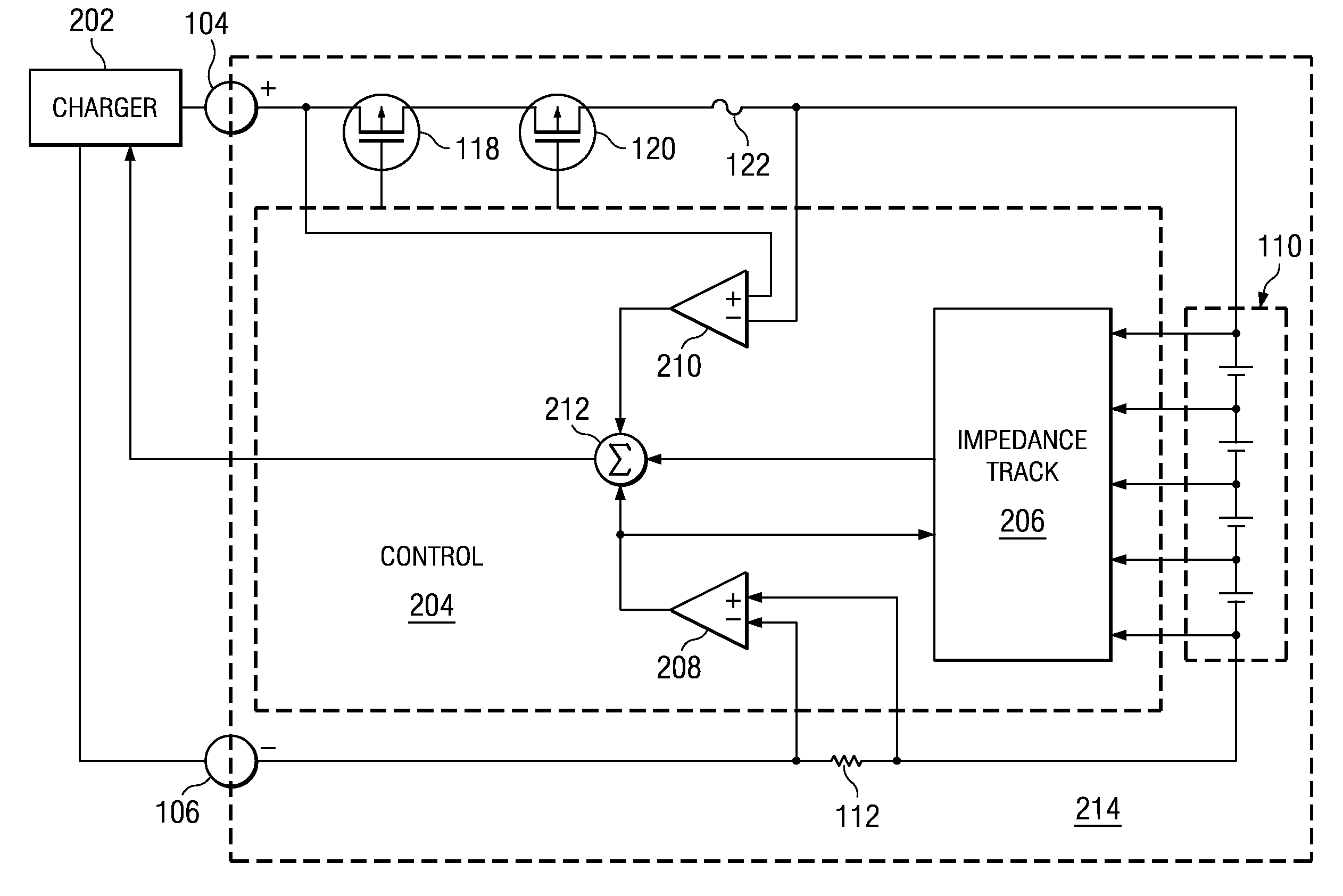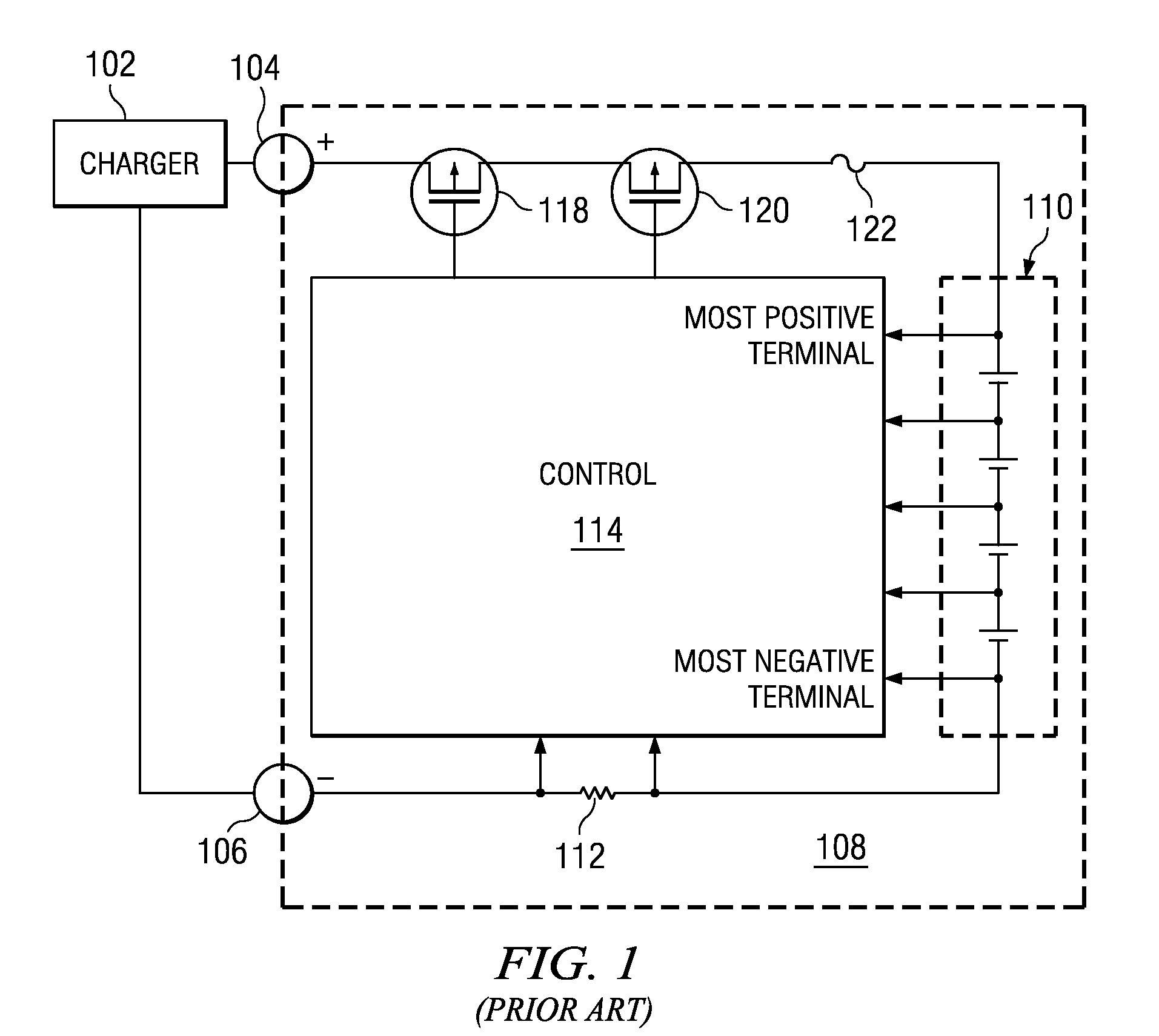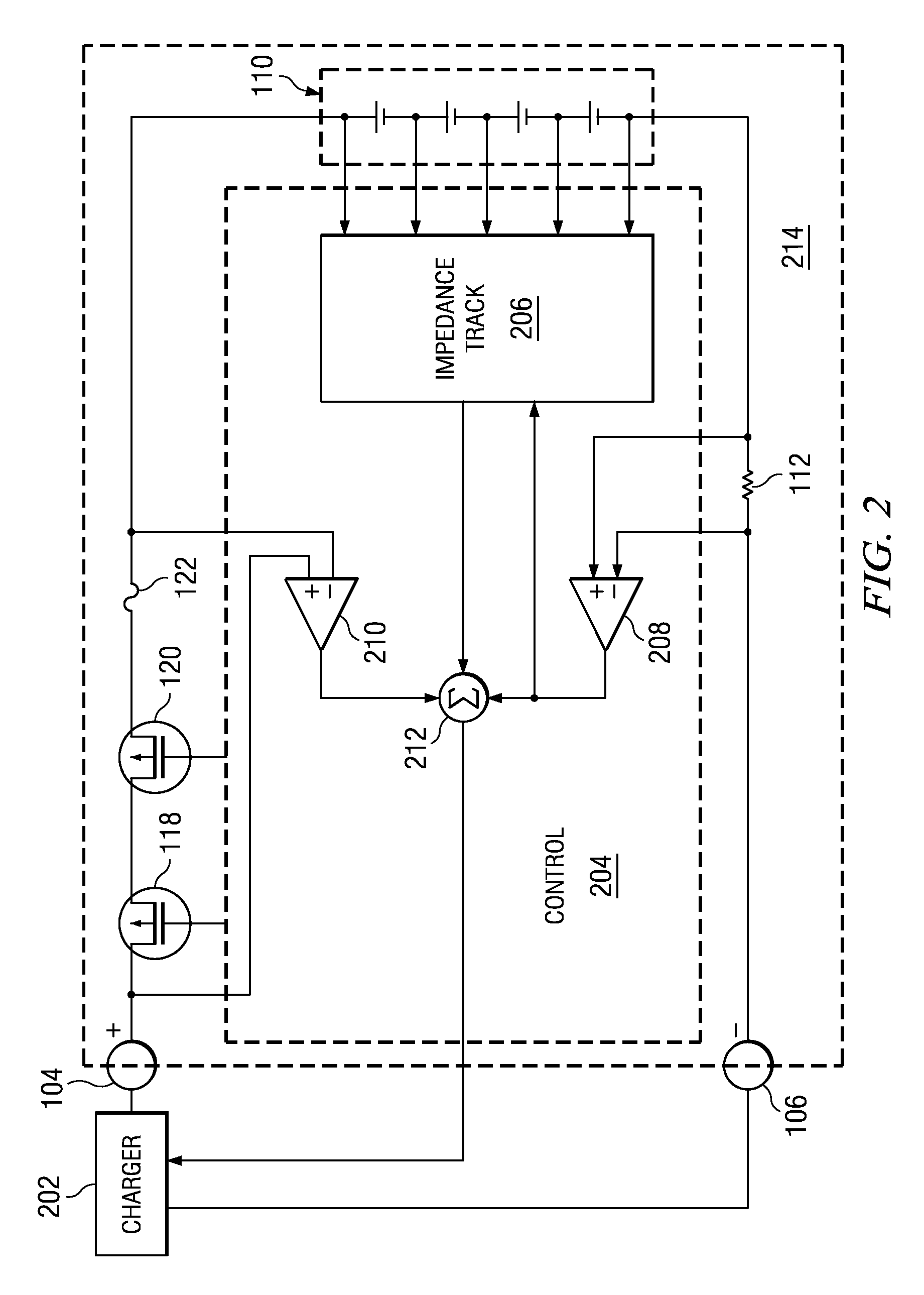Battery charge compensation
- Summary
- Abstract
- Description
- Claims
- Application Information
AI Technical Summary
Benefits of technology
Problems solved by technology
Method used
Image
Examples
Embodiment Construction
[0029]In FIG. 1, a charger 102 has a positive output coupled to the positive terminal 104 of battery pack 108, and a negative output coupled to the negative terminal 106 of the battery pack. Switching and protection elements comprise charge FET 118, discharge FET 120, and fuse 122. FET 118 has a first terminal coupled to the positive terminal 104, a second terminal coupled to the first terminal of FET 120, and a third control terminal. FET 120 has a first terminal coupled to the second terminal of FET 118, second terminal coupled to a first terminal of fuse 122, and a third control terminal. The second terminal of fuse 122 is coupled to a first terminal of cells 110 which is the most positive voltage of cells 110. Another terminal of cells 110 which is the most negative voltage of cells 110 is coupled to a first terminal of sense resistor 112. A second terminal of sense resistor 112 is coupled to the negative terminal 106. A control circuit 114 has a first terminal coupled to the th...
PUM
 Login to View More
Login to View More Abstract
Description
Claims
Application Information
 Login to View More
Login to View More - R&D
- Intellectual Property
- Life Sciences
- Materials
- Tech Scout
- Unparalleled Data Quality
- Higher Quality Content
- 60% Fewer Hallucinations
Browse by: Latest US Patents, China's latest patents, Technical Efficacy Thesaurus, Application Domain, Technology Topic, Popular Technical Reports.
© 2025 PatSnap. All rights reserved.Legal|Privacy policy|Modern Slavery Act Transparency Statement|Sitemap|About US| Contact US: help@patsnap.com



